Trees Birds Mammals Fish Amphibians Reptiles
Wild Algarve
Bookshop
Hygrophorus nemoreus (Pers.) Fr. - Oak Woodwax
Phylum: Basidiomycota - Class: Agaricomycetes - Order: Agaricales - Family: Hygrophoraceae
Distribution - Taxonomic History - Etymology - Identification - Culinary Notes - Reference Sources
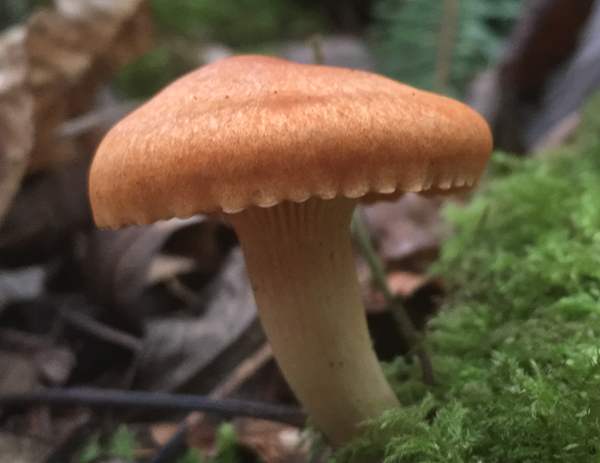
The Oak Woodwax is easily mistaken for the Meadow Waxcap Cuphophyllus pratensis, and caution is necessary: the growing habitat is not sufficient to confirm identification because Meadow Waxcaps do occur occasionally in woodlands.
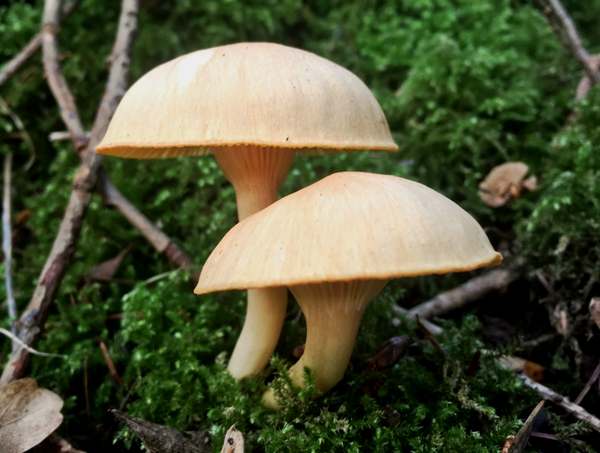
Distribution
Hygrophorus nemoreus occurs throughout Britain and Ireland, but it is a rare find. On mainland Europe the Oak Woodwax is found from Finland down to the Mediterranean countries and the Iberian Peninsula, but it is uncommon to rare in most countries (and red-listed in Norway and Sweden). The substantial risk of confusion with Cuphophyllus pratensis must inject a degree of uncertainty into distribution data for Hygrophorus nemoreus.
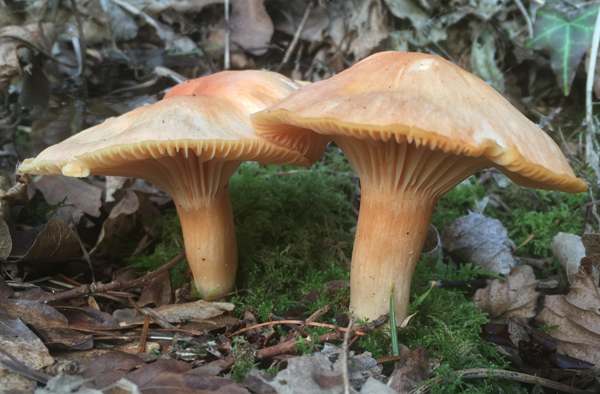
Taxonomic history
The basionym of this species was established when it was described scientifically and named Agaricus nemoreus by Christiaan Hendrik Persoon in 1801. It was the great Swedish mycologist Elias Magnus Fries who, in 1838, renamed this woodwax mushroom Hygrophorus nemoreus, which is the scientific name by which mycologists refer to it today.
Synonyms of Hygrophorus nemoreus include Agaricus nemoreus Pers., Camarophyllus nemoreus (Pers.) P. Kumm., and Hygrophorus pratensis var. nemoreus (Pers.) Quel.
Etymology
Hygrophorus, the genus name, comes from hygro- meaning moisture, and -phorus meaning bearer. Not only do these fungi contain a lot of water (as do most other mushrooms, of course) but they are also moist and sticky to touch.
The specific epithet nemoreus means 'of the wood' or 'of the glade' - a reference to the habitat of these woodwax fungi.
Identification guide
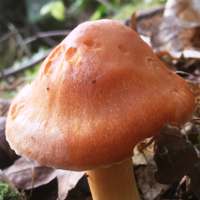 |
Cap
Reddish ochre to apricot coloured, often slightly darker in the centre, covered with fine dense radial fibrils; convex, becoming flat or slightly depressed with a broad umbo; dry; 4 to 7cm (exceptionally to 10cm) across; margin of young specimens markedly involute. |
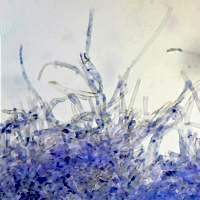 |
Pileipellis
A cutis, in places a trichoderm, comprising short elements of hyphae 2 - 7μm in diameter, constricted at septa. Some terminal elements, typically 25 - 75 x 4-8μm, emerge erect at the surface; clamps present.
|
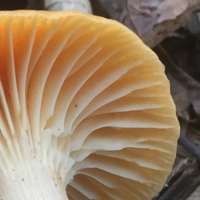 |
Gills
Cream, developing a pinkish ochre tinge with age; thick; fairly distant; decurrent.
Stem
Whitish at the base, the apex either whitish or concolorous with the gills; finely pruinose, especially towards apex; often curved; cylindrical, tapering sharpy towards base; 5 to 9cm long, 0.8 to 1.5cm diameter; covered in fine longitudinal fibrils. The stem flesh is whitish. |
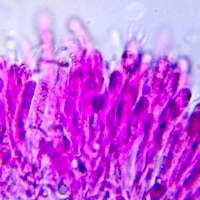 |
Basidia
The subcylindrical or slightly clavate basidia are typically 40 x 7μm and mainly four spored with occasionally a few being monosporic. Basal clamps are present.
|
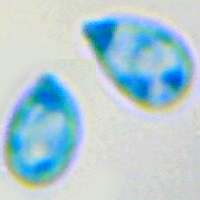 |
Spores
Broadly ellipsoidal to lacrimose, 6-8 x 4-5μm. Q = 1.4 - 1.8.
Spore print
White. |
Odour/taste |
The faint mealy (floury) taste and smell of this woodwax is a helpful distinguishing feature. |
Habitat & Ecological role |
In broadleaf woodland, more often on alkaline soils; favouring oaks (Quercus spp.) but also found with Beech (Fagus), Hornbeam (Carpinus), Hazel (Corylus) and birches (Betula). |
Season |
Autumn and early winter. |
Similar species |
The Meadow Waxcap Cuphophyllus pratensis is a common and widespread (nearly always grassland) mushroom with a smoother cap; its somewhat shorter spores with a Q value of 1.1 - 1.4. |
|
Culinary Notes
This is a rare mushroom throughout its range and should not be gathered except when necessary for research purposes.
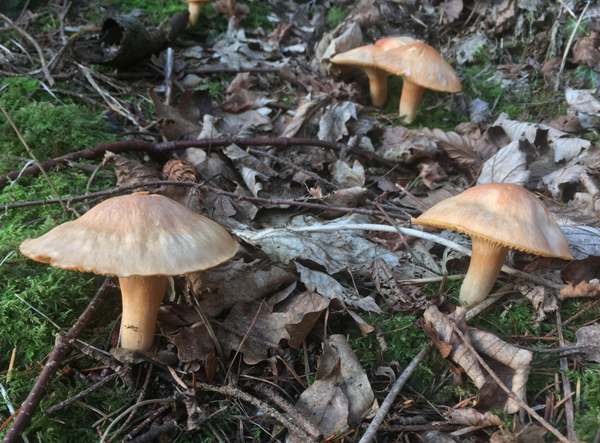
Reference Sources
Fascinated by Fungi, 2nd Edition, Pat O'Reilly 2016, reprinted by Coch-y-bonddu Books in 2022.
Dictionary of the Fungi; Paul M. Kirk, Paul F. Cannon, David W. Minter and J. A. Stalpers; CABI, 2008
Taxonomic history and synonym information on these pages is drawn from many sources but in particular from the British Mycological Society's GB Checklist of Fungi.
Acknowledgements
This page includes pictures kindly contributed by Simon Harding.
Top of page...
Fascinated by Fungi. Back by popular demand, Pat O'Reilly's best-selling 450-page hardback book is available now. The latest second edition was republished with a sparkling new cover design in September 2022 by Coch-y-Bonddu Books. Full details and copies are available from the publisher's online bookshop...